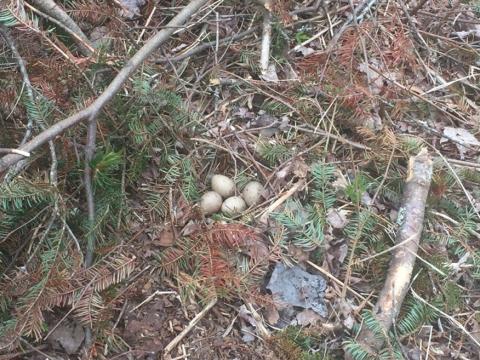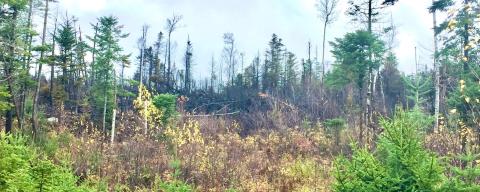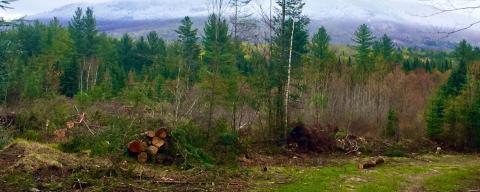Young Forests
One topic that comes up on almost every one of my woodlot walks is wildlife habitat. Sometimes the discussion is about managing the existing habitat, while other times it is about creating habitat. In most cases, whether managing, creating, or enhancing wildlife habitat, this involves young forests. Young forests, also called early successional forests, are very important to a host of wildlife species.
For many years, our philosophies and practices were not those of conservation. Wetlands were turned into farm fields, forests were cut down for their timber, and grasslands were converted to croplands. Through knowledge, research, and experience, things have changed. We now know that wetlands, mature forests, and native grasslands are so much more important for a variety of reasons.
One type of habitat that is not as well known or thought of, but no less important, is young forest. Foresters and biologists know it as ‘early successional habitat’. This habitat is essential for a variety of insects, reptiles and amphibians, birds, and mammals. We have seen a number of species decline in numbers over the past decades, largely due to amount and condition of early successional habitat.
Young forest habitat was perpetually renewed in the past, by hurricanes, wildfires, ice storms, insects, spring flooding, and even beaver activity. Since we started to keep these natural phenomena in check, this important habitat has been in decline, and the wildlife species that depend on it as well. Species like the bobcat, New England cottontail, American woodcock, ruffed grouse, indigo bunting, yellow warbler, box turtles, Karner blue butterfly, and many, many others, have declined as this habitat has faded from the landscape.

As most of us know, Moose feed on young trees and shrubs. Young forest habitat provides ample food for these mammals to thrive and raise their young.
Due to some irresponsible logging practices in the late 1800’s and early 1900’s, and the resulting public opinion that cutting down trees is bad for the environment, logging was slowed or ceased completely in many areas in the eastern United States. Here in the northeast, as more people traveled from urban centers along the seacoast, to the forests and waters of northern New England, this impression about timber harvesting continued. Insect infestations that spread over extremely large acreages of our Spruce/Fir forests, necessitating the creation of large clear-cut areas designed to salvage the raw materials while minimizing fire danger, caused the general public to, once again, facilitate the alteration of logging practices. This change in how forests were being managed began the decline in our young forest habitat.
This is an opening created a few years ago to re-establish some young forest habitat in an area of more mature forest cover.
In 2005, the Wildlife Management Institute and its partners recognized the American Woodcock as an ‘umbrella species.’ That is, the single species that represents the largest number of other wildlife reliant upon young forest habitat. By creating, enhancing, and maintaining woodcock habitat, we can simultaneously help many other animals suffering from the decline in this habitat.
In 2006, the US Fish & Wildlife Service designated the New England Cottontail, a young forest mammal, as a candidate for the endangered or threatened list under the Endangered Species Act. Currently, with the help of many state, federal, and local partners, this species has begun a rebound in some areas.
This shows a ten-year old opening next to a newly harvested opening. These have been specifically designed to provide American woodcock habitat, which will also provide early successional habitat for a wide range of other wildlife species.
These practices have delivered great results. By creating these openings across the landscape, early successional tree species may become established and provide the young forest habitat desired. An increase of moose, deer, and bear has been observed in these areas, as well as snowshoe hares. The number of ‘singing male woodcock’, a measure of reproductive use in an area, in some of these treatment areas, has increased significantly. The variety of songbirds that require this habitat has also increased dramatically.

Since the Yong Forest Initiative began, by making this habitat over the past decade, the Wildlife Management Institute and its partners have halted the decline in American woodcock population across its range.
For more information about this habitat, whether the creation, enhancement, or maintenance of, reach out to your County Forester. To learn more about the effort to create and restore young forest in eastern North America, visit www.youngforest.org.
Sources: The Young Forest Project, Helping Wildlife Through Stewardship and Science, January 2014



